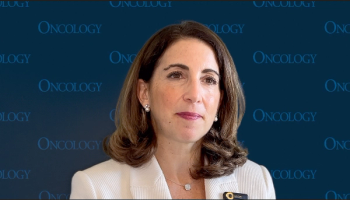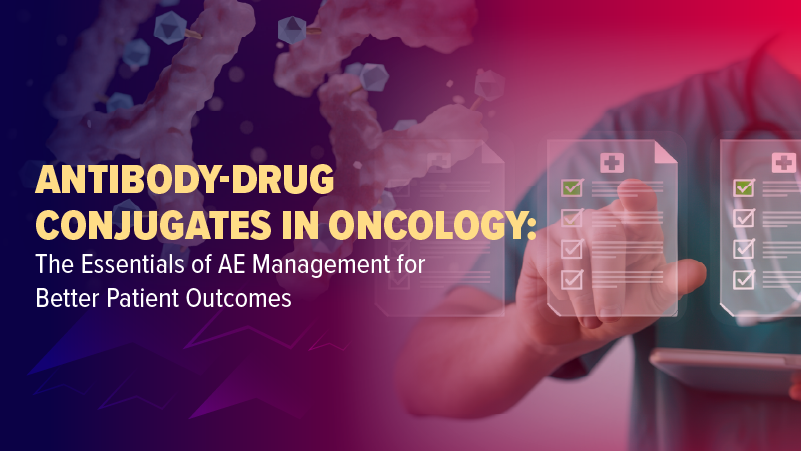
- Oncology NEWS International Vol 11 No 2
- Volume 11
- Issue 2
Dosing Schedule Changes Needed for Use of Liposomal Doxorubicin
NEW YORK -The safer and better-tolerated "stealth" form of doxorubicin has a potential for the treatment of metastatic breast cancer that has not yet been realized due to overly toxic dosing schedules, Charles L. Vogel, MD, of Cancer
NEW YORK The safer and better-tolerated "stealth" form of doxorubicin has a potential for the treatment of metastatic breast cancer that has not yet been realized due to overly toxic dosing schedules, Charles L. Vogel, MD, of Cancer Research Network, Inc., Plantation, Florida, said at the Chemotherapy Foundation Symposium XIX (abstract 45).
Compared with standard doxorubicin, the toxicity profile of pegylated liposomal doxorubicin (Doxil) includes less alopecia, nausea/vomiting, and neutropenia, and possibly less cardiac dysfunction. However, the high rates of plantar-palmar erythrodysesthesia (PPE) and stomatitis have been a problem, and trials to date have used doses that some investigators think are too high to achieve maximal tolerability.
"Doxil, with a proper development plan, could eventually replace doxorubicin if it is proved to be equivalent, or better," Dr. Vogel said. "And it probably could do that, because of its long half-life, but not with the dose-dense strategies that have been used in past studies."
Pegylated liposomal doxorubicin has a half-life approximately 100 times that of doxorubicin. Its polyethylene glycol (PEG) coating evades the immune system (hence its "stealth" moniker) and remains encapsulated until reaching the tumor, thus increasing drug concentration at the tumor site, as documented in studies of Kaposi’s sarcoma and breast cancer.
Unfortunately, there is very little clinical data on use of Doxil as a single agent in breast cancer. The first major trial in metastatic breast cancer, published in 1997, evaluated a variety of doses in 71 mostly untreated patients. While response rates of 29% to 50% were seen, rates of PPE ranged from 34% to 85%.
"I maintain that these doses (60 mg/m² every 3 weeks, 45 mg/m² every 3 or 4 weeks) were probably too high," Dr. Vogel said. "In fact, there haven’t been studies at doses I think are more tolerable." Subsequently, Israeli investigators reported that higher, protracted doses (every 5 weeks or every 6 weeks) were associated with an increased incidence of stomatitis.
However, the lack of cardiac dysfunction has been encouraging. In studies of liposomal doxorubicin in patients with prior chemotherapy, there was no cardio-toxicity noted at total doses up to 1,260 mg/m², "far higher" than with nonliposomal doxorubicin, Dr. Vogel noted.
An EORTC study of liposomal doxorubicin as first- or second-line therapy in locally advanced metastatic disease at doses of 60 to 70 mg/m² every 6 weeks resulted in response rates of 50% (including prolonged, stable disease), with a "quite credible 36-week response duration, similar to what would be seen with first-line agents," he said. Stomatitis was again a problem at these higher doses, although the investigators maintained that the schedule was "tolerable," he said.
In a retrospective review including 40 breast cancer patients given 45 mg/m² of liposomal doxorubicin every 4 weeks, Dr. Vogel and his colleagues reported a clinical benefit rate of 44%, including partial response in 26% and stable disease for at least 6 months in 18%. More than half the patients had received at least two prior regimens, and most had received a broad array of hormonal treatments.
As a function of prior chemotherapy, the benefit up to third-line treatment was in excess of 50%, and one of five fourth-line patient responded to liposomal doxorubicin. Median time to progression was 4.5 months (8 months for responders). Survival was 16.5 months.
The drug given at this schedule was "quite tolerable," Dr. Vogel said, with an incidence of mucositis and PPE of only 3% each, and one drop in left ventricular ejection fraction. There was also anemia and some grade 3 leukopenia in this heavily pretreated population.
"What’s needed now are phase III trials using more tolerable yet effective dosages," Dr. Vogel said. The most important study is comparing liposomal doxorubicin with standard doxorubicin in 509 patients using a dosage of 50 mg/m² every 4 weeks, which he believes may still be too high. At the time of Dr. Vogel’s presentation, data from this study were in analysis.
A second randomized trial of 301 patients with advanced breast cancer who had failed a taxane regimen compared liposomal doxorubicin at 50 mg/m² every 4 weeks vs two other regimens: vinorelbine (Navelbine) or mitomycin (Mutamycin) plus vinblastine.
Median progression-free survival was slightly higher in the liposomal doxorubicin arm, with relatively low response rates of 13% and 15% for liposomal doxorubicin and comparators, respectively. For those who did respond, the response durations were a "creditable" 6.7 months and 6.0 months, respectively, he said.
Liposomal doxorubicin is also being tested in a variety of combinations. Just-published data suggest potential for liposomal doxorubicin plus docetaxel (Taxotere) in locally advanced or metastatic breast cancer (Sparano et al: J Clin Oncol 19:3117-3125, 2001). The combination produced an "excellent" response rate of 88% in the neoadjuvant setting, and a 52% response rate in stage IV disease, with a median time to progression of 8 months, Dr. Vogel said.
Another combination currently under investigation is liposomal doxorubicin plus trastuzumab (Herceptin). "We know the anthracyclines plus Herceptin are quite active, but they have a problem with cardiotoxicity," said Dr. Vogel, an investigator in that study. "If you could come up with a noncardiotoxic anthracycline plus Herceptin, that might be a well-tolerated advance."
Articles in this issue
over 23 years ago
R115777 Has Significant Activity in CML and Myelofibrosisover 23 years ago
National Cancer Prevention Campaign Discussedover 23 years ago
CHOP Plus Rituxan Proves Cost-Effective in B-Cell Lymphomaover 23 years ago
Lung Cancer Screening Protocol Moves Forwardover 23 years ago
Cancer Prevention Research Hampered by Lack of Biomarkersover 23 years ago
Rituximab Improves Efficacy of Chemotherapy for Follicular Lymphomasover 23 years ago
Long Survival Confirmed in CML Patients Who Respond to InterferonNewsletter
Stay up to date on recent advances in the multidisciplinary approach to cancer.


















































































